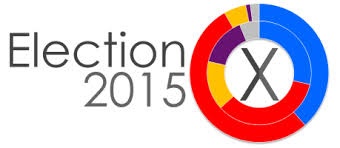In the run up to any general election there is a period of uncertainty, none more so than the vote scheduled for 7th May 2015.
2010 saw a televised leader’s debate which thrust Nick Clegg and the Liberal Democrats to the forefront of voter’s minds. The up swell of support saw them holding the balance of power and for the first time since 1945 a formal coalition was agreed to govern the country for the next five years.
Five years have passed and it is widely regarded that the economy is stronger than it was at the start of the Conservative-Liberal term but both parties are paying the price with the public for unpopular policies linked to ongoing austerity.

During the past five years the political landscape has changed and support has gradually increased for the fringe parties, UKIP, The Green Party and more recently, with the referendum on Scottish Independence, The SNP. This is likely to lead to some instability after the election, with no single party or coalition of parties able to form a majority government. A two party coalition, formed of two of the three main parties, may both prove mathematically impossible because of the forecast wins for previously insignificant fringe parties.
Should the current polls reflect the final result, The SNP is likely to make demands in return for supporting a Labour led coalition, while UKIP is likely to do something similar, with the Conservatives, if they hold the balance of power. This assumes a formal coalition can be agreed at all. All of these scenarios will create anxiety as the country contemplates possible withdrawal from Europe, increased powers for Scotland or a lack of decisive action due the nature of any informal alliances– not an environment in which SMEs will find it easy to plan.
Whatever government is formed in May, the fiscal deficit still looms large which means pressure for renewed and continued austerity, but probably without the effects being partially offset by full-scale quantitative easing, used to great effect over the past five years.
What does this mean for Businesses?
During the next few months there is a risk of cash flow disruption as companies up and down your supply chain find themselves dealing with the unexpected.
One strategy to mitigate these risks that is being adopted by an increasing number of SMEs, is to arrange an invoice finance facility. This unlocks up to 90 per cent of the cash currently tied up in unpaid invoices.
The arrangement is straightforward and easy to set up, with modest fees. It could be especially beneficial if the economy becomes volatile, as you can outsource your credit management to the invoice finance company who act as a professional credit control function on your behalf, potentially saving money and freeing time and resources to concentrate your efforts on building your business.
Additionally the facility can include bad debt protection, covering against the risk of a customer failing to pay.
These facilities have significant advantages over traditional, bank arranged, overdraft. Unlike an overdraft, an invoice finance facility cannot be terminated without warning. It also grows in line with the business as the more invoices you issue the more money is available – A true growth finance proposition as opposed to a debt facility.

The coming election and after effects is likely to result in a period of political and economic uncertainty that could make conditions for business unsettled. Forward planning of capital investment and careful cash flow planning is always important but more so during a period of uncertainty. Claratus is able to assist in both of these area by introducing and arranging a true alternative to traditional bank finance.